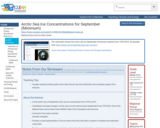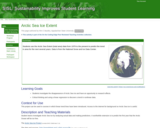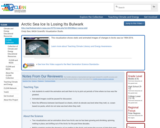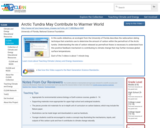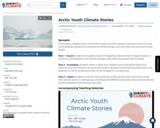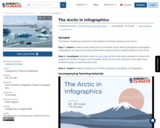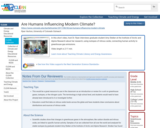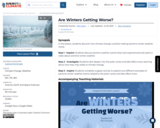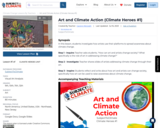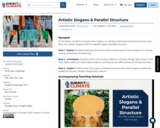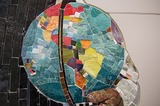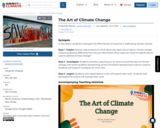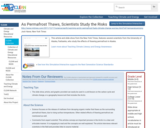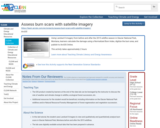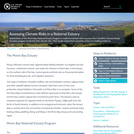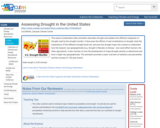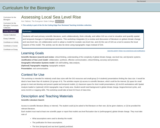SYNOPSIS: In this lesson, students learn some of the impacts climate change is having on the Arctic, hear youth perspectives about the impacts of climate change, and write their own personal climate stories.
SCIENTIST NOTES: Students are instructed in this lesson on the effects of climate change on the Arctic region. Temperature increases are hastening the melting of permafrost, glaciers, and sea level rise. This has an effect on the polar ecosystems and human populations. The contrast between how climate change affects the northern and southern regions of the Arctic is also covered in the lesson, along with suggestions for how students may learn and share their experiences to promote climate action. This lesson passed our science review process after all the materials were fact-checked.
POSITIVES:
-This lesson can be used in any middle school writing class and tailored to the specific skills the class is working on.
-This lesson helps students connect climate change to people.
-This lesson highlights a local community in the Arctic and demonstrates the impact storytelling can have.
-This lesson encourages students to participate in the writing process, including the planning and publishing stages.
-This lesson allows teachers to integrate skills specific to their students.
ADDITIONAL PREREQUISITES:
-The Inquire section gallery walk is about the student-made infographics from the previous lesson. Alternatively, teachers can use the infographics from the Teacher Slideshow.
-Students should understand the basics of writing a story. This includes, but is not limited to, characters, setting, rising action, climax, falling action, and resolution.
-When teaching this lesson teachers should have a baseline understanding of how climate change works and understand some of the impacts in the Arctic.
-In this lesson the term, “story” is consistently used, despite one of the primary standards referring to the term, “narrative.” If students ask to clarify the difference, one way a middle school ELA teacher can differentiate personal narratives from stories is that a personal narrative is a true story whereas a story can be fictionalized.
-For their writing, students will need a basic understanding of the ways climate change is affecting their own communities.
DIFFERENTIATION:
-The final draft of the writing can be used as a summative assessment for this lesson.
-It may be helpful to share a map and show where the Arctic is located if students are unfamiliar.
-Students may need more specific and individual guidance when planning out their writing. Rubrics can be customized for individual students and their learning goals.
-Teachers can give students more time for writing the personal climate story.
